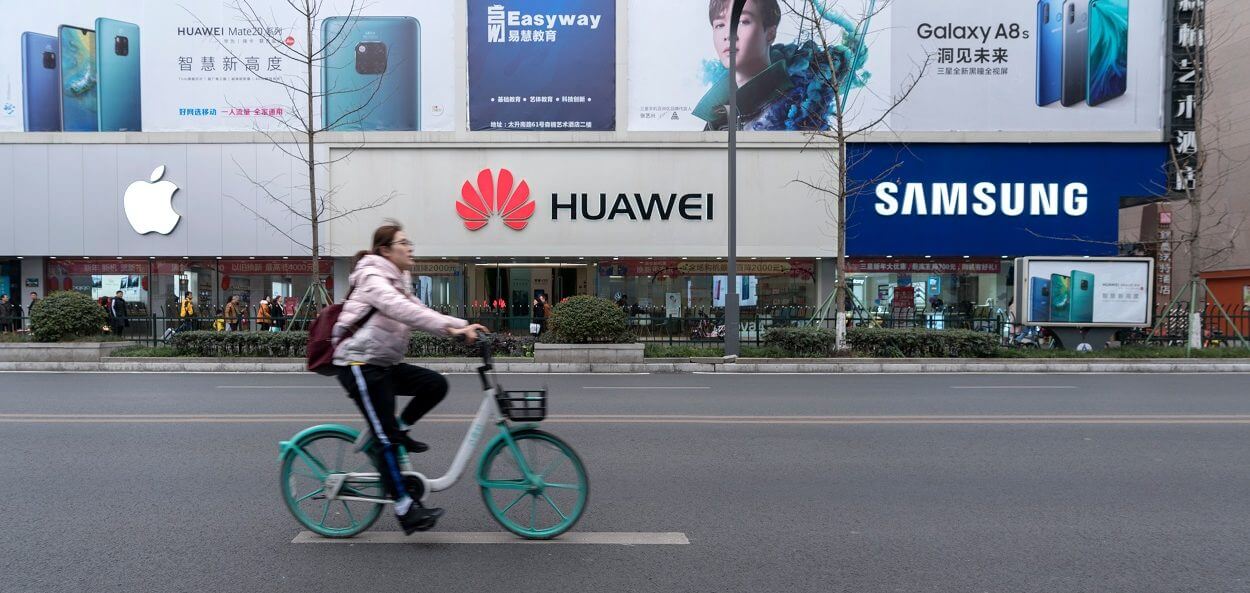In recent years, China has taken many steps to become a more favorable landscape for global businesses to thrive. In fact, in 2019, it was named one of the world’s “Top 10 Most Improved Economies for Ease of Doing Business” by the World Bank. With a bustling economy, a growing middle class, and a culture of innovation, the business landscape in China is not one to miss out on right now.
Historically, China has offered less-than-ideal intellectual property protections for business owners, but its government is taking strides to correct this issue. As long as business owners understand how to navigate the IP protocols in China and sufficiently protect their business’s intellectual property, the benefits of operating in the Chinese market outweigh the risks.

Doing Business in China
If you want to learn more about Doing Business in China, you’ve come to...
Read moreThe Basics of Intellectual Property Rights in China
The legal landscape regarding intellectual property in China is different from many other countries around the globe. Perhaps the most critical variation is that China follows a ‘first-to-file’ structure, meaning that the product’s intellectual property belongs to the person who filed in the country first.
Unlike the first-to-invent systems, which grant IP to the person who initially invented a product, first-to-file makes it VERY important to immediately apply for IP protections when you start conducting business in China. Previously, the US and Canada used to rely on a first-to-invent system but eventually switched to first-to-file instead.
Even if you have secured protections in your home country or other countries where you conduct business, you must file with China’s National Intellectual Property Administration separately. In many cases, businesses will need to work with a local patent agency to file on their behalf. Even if a business has legal residence in China and is not required to obtain an agent, working with a well-versed professional in Chinese IP law can help businesses avoid IP issues and challenges.
Where and How Intellectual Property is Registered
Under the “intellectual property” umbrella, there are various types of IP. The major IP categorizations are patents, copyrights, and trademarks. Each comes with a unique filing process and approval timeline, so it is critical to consider what IP type you need to register and how to obtain protections in China properly.
Patents
In China, patents give legal protection to the person who files them, ensuring that a third party, such as a business or individual, cannot reproduce the protected subject without permission. China’s National Intellectual Property Administration (CNIPA) issues and tracks patent protections.
There are three types of patents: invention patents, utility models, and design patents. Each type must be handled slightly differently than the others, emphasizing the importance for businesses to conduct extensive patent research and preparation.
- Invention Patents
When a new technical solution is created, or a product or process is improved, an invention patent is the correct IP protection avenue. The filing party must first complete and file the patent application, include relevant documents with the initial application, and pay the required filing fee.
Once CNIPA receives the application, they will review it and examine it within 18 months of the application date. The process usually takes 3-5 years, but if granted, invention patents protect for 20 years from the date they were filed.
- Utility Models
If a new technical solution or change to the existing shape or structure of a product takes place, it falls into the category of utility models. Since these advancements feature less innovation than invention patents, there is a quicker review process.
It generally takes about a year for CNIPA to review and preliminarily examine the application. If granted, protection lasts for 10 years, making this the best route for incremental product design changes.
- Design Patents
Very similar to utility models, design patents are forms of protection for adjustments to products that involve external components, such as the shape, pattern, or color of an existing product. There is no substantive examination conducted in this case, and the patent lasts 10 years from the filing date when approved.
For increased protection, business owners should file their patent applications prior to offering the product to the public. In certain cases, there is a recognized 6-month grace period provided for public disclosure. These particular cases occur under the following circumstances:
- if the product was first exhibited at an international exhibition that was sponsored in any part by China.
- if it was disclosed publicly in an academic or technological meeting.
- if it was disclosed by a third party without the consent of the applicant.
Trademarks
The CNIPA administers and manages trademark applications as well as patents. Trademarks are composed of letters, words, numbers, color combinations, shapes, and designs that differentiate your goods or services from others on the market. For instance, the Nike “swoosh” is trademarked. In China, sounds can also be registered as a trademark, though that is not the case for every country.
The “first-to-file” system applies to trademarks in the same way it applies to patents; if your business needs to trademark a logo or something similar, complete the application process as soon as possible. Filers should submit trademark protections for the Chinese version of their trademarks, too. If protection is granted to a word or phrase written in Roman characters, that same protection will not automatically apply to the word or phrase written in Chinese characters.
Filers will need to submit an application along with any required filing fees. Then, the CNIPA will review and either grant or deny the trademark. Once granted, trademarks provide protection for 10 years and can be renewed every 10 years following the approval. If a trademark goes unused for three years in a row, CNIPA reserves the right to cancel the trademark protection.
Copyright
Copyright protections shield original literary, dramatic, musical, and artistic works from unlawful replication. Unlike patents and trademarks, the CNIPA is not involved with reviewing and granting copyright protections. Instead, the National Copyright Administration of China (NCAC) handles all copyright-related requests. Copyright is never required in China, but it can help solidify ownership for legal purposes.
At first, properly navigating legal protections for goods or creative works in China can be confusing. Still, with the improved structure and governance around the process, it has become more manageable. Working with verified agencies can streamline the application and approval process even further; sometimes, an agent is legally required.
Intellectual Property Theft in China
China’s reputation for intellectual property protection has not been widely revered; however, it has, in recent years, seen a wave of change. Still, although protection infrastructure is becoming more sophisticated, so are the entities that infringe on IP protections. These entities Often exploit legal loopholes, making it difficult to feel fully protected in China. To best protect your IP in China, you must first understand the potential risks such as counterfeiting, piracy, and trade secrets.
Counterfeiting
When imitating authentic products with the intent to sell them to consumers or trade them for authentic products, this will be considered as counterfeiting. When individuals or businesses attempt to trick consumers into thinking their products are the real thing, they exploit both the protected items and consumers. Great examples of counterfeit products are luxury handbags or watches that are often mimicked with lower quality items.
Piracy
A slang term used for copyright infringement, piracy is often used to describe the theft or copying of games, videos, books, or songs that are protected under Copyright channels. It’s not uncommon to see piracy warnings at the beginning of movies or shows, warning viewers of the impact piracy can have.
Trade Secrets
As defined by the World Trade Organization, trade secrets must be secret and as such are valuable because of their secrecy and should have reasonable protections in place. Trade secrets can include recipes, marketing strategies, manufacturing processes, or related business information. Since these are “secrets” there has not always been direct legal protection surrounding trade secrets, but in recent years, China and other countries have bolstered protections regarding trade secrets.
How to Protect Your IP Rights in China
As China continues to refine the IP protections available within the country, much of the enforcement will fall on the actions taken by individual and business filers. To keep your inventions or creative works from being infringed upon, follow these 4 tips:
1. File for Necessary Protections
This is a critical step in ensuring IP protection. As outlined above, be sure to apply for and obtain any necessary IP protections for your creations. The application processes can be long and tedious depending on what you’re trying to protect, so don’t waste any time in filing your applications. Remember, if someone beats you and files first, they will be granted the IP protections, even if you invented the product first or went to market with it earlier.
2. Reinforce Legal Agreements with China-Specific Contracts
If any of your IP is going to be revealed to someone or another business entity in China, secure contracts to protect the shared information. An NNN Agreement is similar to a non-disclosure agreement (NDA), but more commonly used and recognized in China. You can also lean on non-compete agreements, confidentiality agreements, and similar contracts to heighten the protection of your IP.
3. Act Swiftly and Powerfully When Enforcing Your Protections
If you find websites or businesses that are infringing upon your intellectual property, work within the Chinese legal system to put an end to the sale of those products. You can take legal action against manufacturers, suppliers, warehouses, and even retailers that are involved.
4. Register IP to China Customs
As an added layer of protection, register your IP with customs in China. In theory, China customs will prevent infringing products from leaving or entering the country, stopping the infringer’s ability to profit off of stealing your IP.
Weighing the Pros and Cons
There are so many opportunities when it comes to doing business in China, but there are also some risks associated with entering the market. The more prepared you are, the better your business can respond to and mitigate risks. As a business leader, it’s your job to ensure that the benefits outweigh the risks of making the jump into China, but hopefully, our guide made IP management more accessible.
Ensure your IP Remains Protected
Having been in the Chinese market for more than a decade, we understand the business landscape and the processes necessary to ensure your success. We assist businesses in the entire set-up process and provide assistance to ensure they have all necessary licenses needed to operate in China. Get in touch with us today and find out how we can help you can get started.





